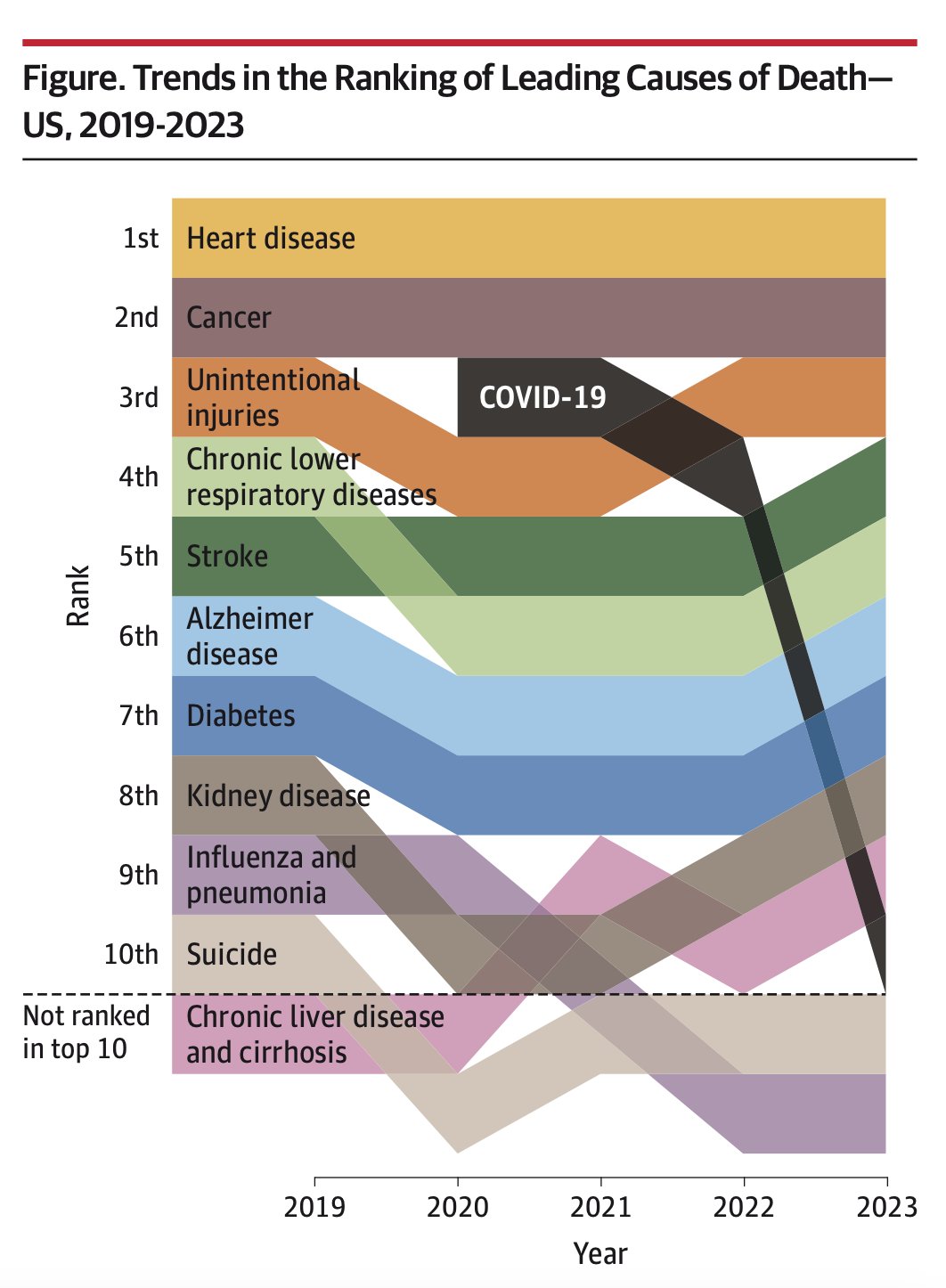Childhood death rate may go up as vaccination rates are dropping.
@KarlT That just makes me sad. There are many exceptional vaccines that save lives and I find it heart rending that children should pay for the lunacy of their parents.
Do you have the chilipad doc pro ? They claim this would be more silent , but am extremely to noise … eight sleep is very expensive though and with subscription; did not find any alternatives on the Ali’s & co …
No - I have the original Chilipad. I picked up mine off Craigslist (you could also try Facebook Marketplace) - for the “Pro” version, and that would give you a chance to listen to it to see if its quiet enough for you.
From Peter Diamandis / Dan Buettner:
The most important determinant of happiness and, therefore, longevity is where you live. Choose your environment wisely!
Why southern Europeans will soon be the longest-lived people in the world
Diet and exercise, but also urban design and social life
The calle de jordán, a short street in central Madrid, encompasses the entire cycle of human life. On one block is a fertility clinic, an increasingly common sight in a country obsessed by its shortage of babies. A block further down is a day centre for pensioners, advertising services like memory training and help with mobility. It is common to see women in their 60s gently leading their 90-something mothers up to the door.
The Institute for Health Metrics and Evaluation at the University of Washington recently issued projections for longevity by country in 2050. Among the top 20 for living to a ripe old age are rich ones like Switzerland and Singapore. East Asia is also represented by South Korea and Japan, longtime longevity leaders.
chart: the economist
But a geographic cluster of relatively poorer countries are also conducive to longer lives: Spain, Italy, France and Portugal. (Three nearby microstates, San Marino, Malta and Andorra, make the top 20, too.) The oldest person alive is a Spanish woman, Maria Branyas Morera (117), who succeeded a French one. Health and long life correlate unsurprisingly with gdp per capita. Why does southern Europe outperform the usual link between wealth and health, making the average lifespan in Spain (85.5 years in 2050) longer than that of the average Dane (83.5)?
Read the full story: Why southern Europeans will soon be the longest-lived people in the world (The Economist)
Extremely viral video, 8 million views. Covers low salt diet, plant-based diet as well, he thinks it can prevent a bunch of different diseases and heal them. That was a bit random.
Interplay of sex, marital status, education, race linked to 18 year US lifespan gap
The interplay of a quartet of sex, marital status, education, and race is linked to an 18 year lifespan gap for US citizens, and while no one factor is more influential than any of the others, the more of these influential factors a person has, the higher their risk of an earlier death, finds research published in the open access journal BMJ Open.
But a simple scoring system based on these characteristics can help overcome this complexity to identify those most at risk, say the researchers.
Individual risks and genetic factors explain part of the differences in health and death, but the evidence increasingly points to the role of social determinants—the conditions in which people are born, grow, live, work and age—in shaping health, explain the researchers.
But when it comes to identifying those groups at high risk of early death, using only one of these factors often masks wide lifespan inequalities within these groups, and various factors influence health in different ways, making it difficult to identify a person at risk, they add.
To better understand how these inequalities act in tandem with one another, and to identify people at high risk of an early death from all, and specific, causes more accurately, the researchers looked at lifespan differences associated with 4 key social determinants, with the aim of drawing up a scoring system.
They extracted information on registered deaths and population numbers from national statistics and census data for the period 2015-19, to analyse the potential influence of all combinations of sex, race, marital status, and education level on the risk of early death—54 different groups in total.
They included 12 specific causes of death, representing the 11 leading causes of death in the US, to include homicide and lung, breast, prostate, and other cancers.
The final analysis is based on partial life expectancy—years lived between the ages of 30 and 80. This revealed very large differences between the 54 groups, with an 18 year difference between those with the shortest and longest partial life expectancies.
For example, White men with a high school diploma or less, who have never married have the shortest partial life expectancy of 37 years. At the other end of the scale, White married women with a university degree can expect to clock up 55 years in partial life expectancy.
But no one factor conferred a clear advantage to all people equally, the researchers found.
For example, university educated White married men have a partial life expectancy of 52 years, which is higher than that of 81% of all the female groups (22 out of 27). Similarly, some groups with low educational attainment outlive some with high educational attainment.
And married Hispanic women educated to high school level or below have a partial life expectancy of 51 years, which is higher than 44% of the groups characterised by a university degree (8 out of 18).
And a characteristic that curtails partial life expectancy can be offset by a characteristic that extends it, and vice versa, say the researchers.
For example, education to high school level or below reduces partial life expectancy by nearly 4 years, but being married and female increases it by almost 5 years, bringing the life expectancy of married women with this level of educational attainment above the national level.
And while a university degree extends partial life expectancy by nearly 4 years, never being married and of male sex shortens it by nearly 5 years, bringing it below the national level.
Based on these findings, the researchers developed a scoring system, ranging from −10 to a maximum of 8, for identifying groups at high risk of early death across the 4 social determinants of health.
Being female (score of 4), and married (0), White (1) and educated to high school level or less (−5) yields a total score of 0. Around half of the 54 groups score 0 or above and nearly 1 in 5 (19%) −5 or lower.
While not everyone in low scoring groups will die early, people in these groups might be at heightened risk, and so might need more medical or public health interventions, explain the researchers.
Marriage and higher educational attainment are two characteristics that always confer lower risk, but the gradient isn’t as obvious for race. Some specific causes of death, such as suicide, unintentional injuries, chronic lung disease and lung cancer adversely affect more Whites, while others, such as liver disease, adversely affect more Hispanics.
Most causes of death tend to adversely affect Blacks across the board. And women generally have a survival advantage over men for all causes of death, except for other cancers and Alzheimer’s disease.
But different social determinants of health affect each cause of death differently, as a result of which, the causes of death contributing to the mortality disadvantage vary across the 54 groups, even if the overall score is the same, the researchers found.
For example, White previously married women with a high school degree or less are at high risk of dying from lung cancer, other cancers, chronic lung disease, Alzheimer’s disease, kidney disease, and influenza and pneumonia.
And Black never married men with a university degree are at higher risk of dying from heart disease, prostate cancer, cerebrovascular diseases, diabetes, kidney disease and homicide. Both these groups have an overall risk score of −3.
The researchers acknowledge that the scoring system could oversimplify underlying factors at play. Marital status is also prone to change. And including more characteristics, such as income, residential area, environmental factors, access to healthcare, or lifestyle could enhance the scoring system’s precision, they suggest.
But they nevertheless conclude: “There is a complex interaction between social and individual determinants of health, with no one determinant explaining the full observed variation in lifespan.
“Having one characteristic that is associated with higher mortality is often not a sufficient criterion to be considered at high risk of mortality, but the risk does increase with the number of such characteristics. In addition, not all analysed social determinants of health have the same degree of influence on lifespan and mortality.”
JOURNAL
BMJ Open
DOI
Look how the leading causes of death in the US have changed over the past 4 years, new JAMA paper:
https://jamanetwork.com/journals/jama/article-abstract/2822207
Would be interesting to see over the last decades and eg a Japan or Sweden vs U.S.
Finally, some pushback on the big food industry:
Meet the billionaire media mogul who’s taking on the food industry
The idea for Todd Wagner’s new advocacy organization FoodFight USA, he says, came to him after visiting George Clooney in Lake Como. He’s recruited Morgan Freeman, who is “obviously” a friend. He personally lobbied Arnold Schwarzenegger and current California Gov. Gavin Newsom to support food makers’ nightmare scenario — a first-in-the-nation law banning certain food additives in the state, which was signed into law last year.
Wagner is best known for his co-ownership of Magnolia Pictures alongside his longtime business partner Mark Cuban. But now, he told STAT in an extended interview, he’s dedicating himself to fighting food makers and their industrial creations, ultra-processed foods.
“I want people angry,” said Wagner, who is worth an estimated $1.9 billion. “This is an indictment of the food companies that have tainted our food supply, and now we wake up 50, 60 years later with a nation that is unhealthy.”
Paywalled Article: Q&A: Media mogul Todd Wagner is taking on ultra-processed foods | STAT
Related:
FoodFight, USA Website:
About time to really make some progress on this. It’s been 15 years since “Food, Inc” 2008 really exposed this but it still got worse. Factory farming became factory everything food…and all wrapped in plastic (and put straight in the microwave). Not to mention Monsanto encouraging farmers to kill and deplete the soil and just substitute chemical fertilizers and pesticides. Kinda like Big Pharma (oops). Now our picture perfect, long storage fruits and vegetables have reduced vitamins and nutrients and more chemicals and microplastics. Is it any wonder that health and lifespan is going down?
At least Big Pharma helps us address medical issues.
Big Food only makes us fat.
Maybe medical issues caused by “Big Food”. They could be working together…you cause the problem, and I’ll fix it…we’ll both get rich!
Given how Ozempic will destroy McDonald’s’ business, I don’t think that Big Pharma and Big Food work together (at least not anymore!).
Then GLP1 antagonists wouldn’t exist as that would make Big Food lose money.
A historically symbiotic relationship doesn’t mean a conspiracy. Their interests now seem to be diverging.




